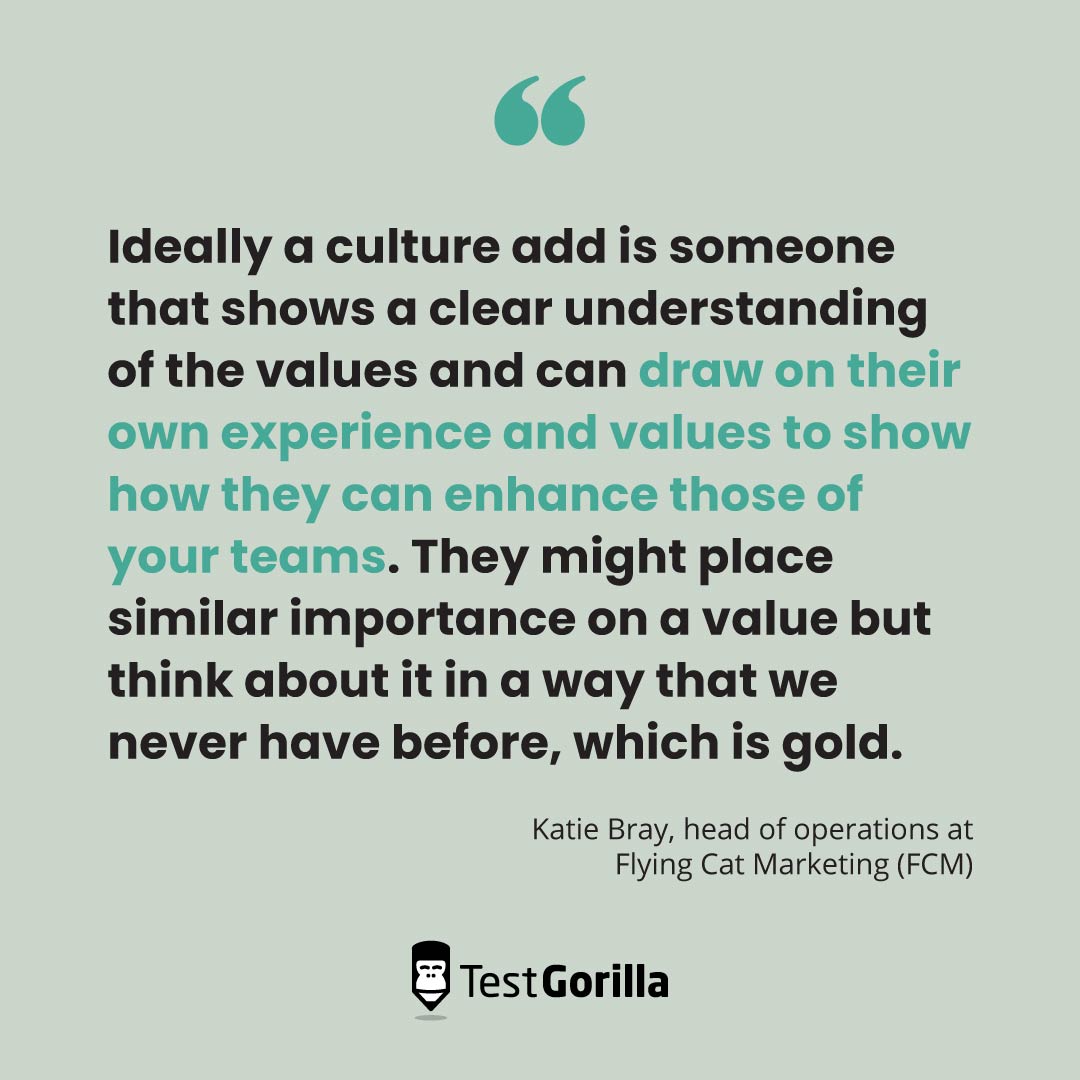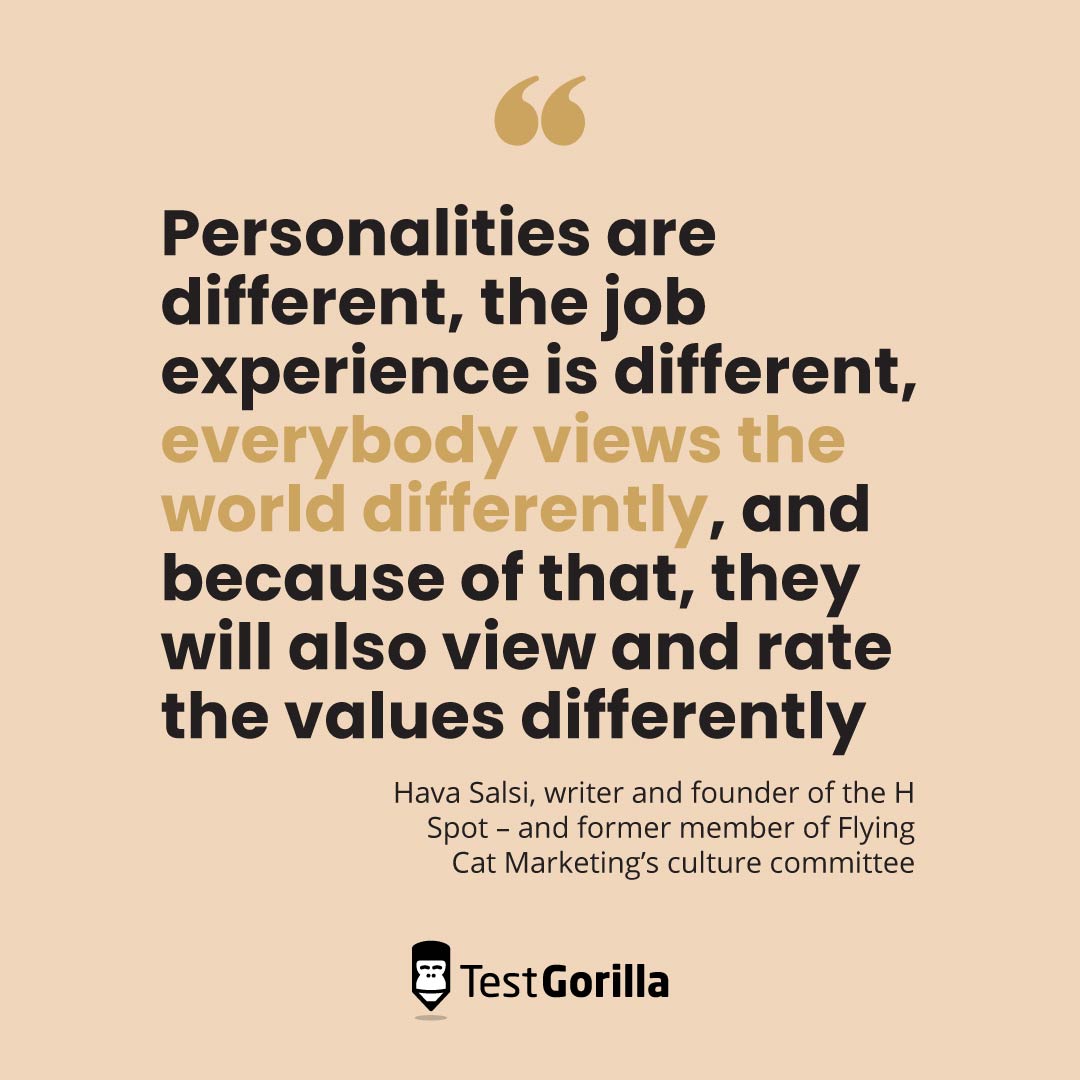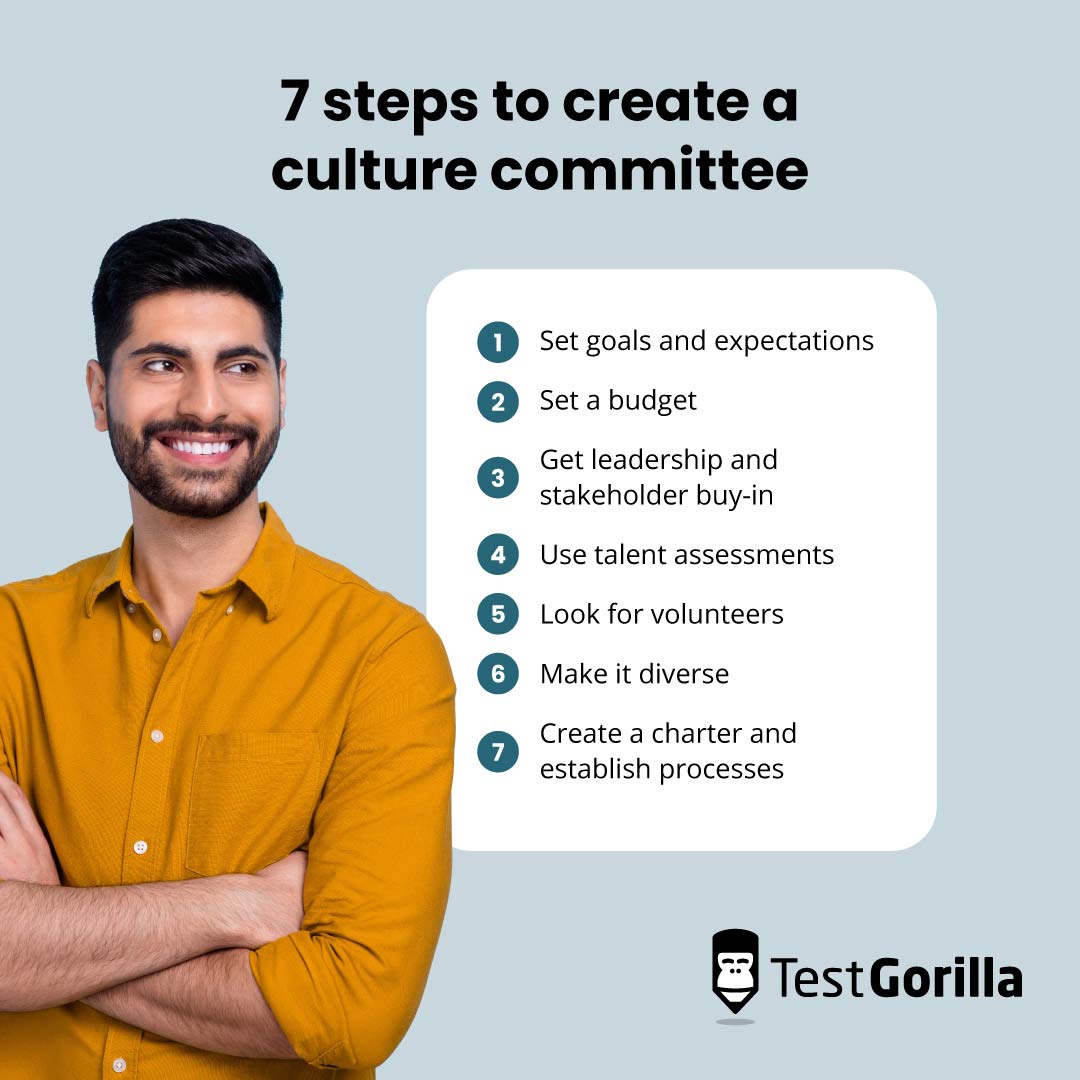“If I define her, I limit her,” said Argentinian actor Chino Darín of his girlfriend, something that’s also true about a company's culture. How can you describe your organization without reducing it to a few common employee characteristics?
Companies need to pay close attention to cultivating the right culture so that their employees feel safe to speak their minds and motivated to achieve better results.[1] You want your workers to live shared values, but also to add their unique perspectives and experiences to the mix.
So, who’s responsible for nurturing and protecting an organization’s culture? Should it come from the top, or are employees responsible for developing it? The truth is, it’s a bit of both. Everyone has a part to play in creating a healthy, inclusive company culture.
Culture committees are voluntary cross-functional teams of employees that work together to promote a shared culture and drive diversity and inclusion (D&I). They might lead team-building activities, discuss sensitive issues, interview potential employees, and become unofficial brand ambassadors – and they can play a critical role in building a positive company culture.
From the hiring process to onboarding and beyond, we’ll look at the role culture committees can play in driving company culture and creating an environment where everyone feels welcome. We’ll also look at the culture add vs culture fit dilemma, the steps to creating a culture committee, and which soft skills to look for in volunteers and candidates.
Table of contents
What is a culture committee?
Culture committees are cross-functional teams that ensure that different viewpoints and needs are heard when making important decisions.
Culture committees exist not to police others but to ensure diversity is part of every conversation and to build an inclusive culture where everyone is valued. They are made up of volunteers and usually have a voice in hiring decisions and internal changes.
For example, you can ask your culture committee about the potential implications of choosing certain locations for your annual in-person get-together. Based on its advice, you might reconsider hosting the event in the US if it means your Venezuelan employees need to fly via Colombia to process their visas (as Venezuela lacks a US embassy).
Involving a culture committee in matters like this lets you view ideas from multiple perspectives and take better, more inclusive decisions.
Culture committees shouldn’t be confused with affinity groups or employee resource groups (ERGs). This is because, while they take diversity into account, the focus is on safeguarding and improving company culture for all employees, regardless of race, gender, or other characteristics.
By contrast, affinity groups or ERGs are more centered on connecting and supporting people from similar, specific underrepresented groups, so that they have a voice in your organization.
How do culture committees positively impact diversity and inclusion?
Culture committees make it easier for you to serve all your employees and candidates, including those from marginalized groups.
They give HR and operations teams an ear to the ground. By tapping into a culture committee resource, you can understand how people are feeling, what’s affecting your culture, and how you can improve it.
A culture committee can also review new policies to ensure they’re inclusive or alert you to any potential employee dissatisfaction, for example, the decision to cut a stipend that helps working mothers.
You can also get your culture committee to interview candidates before you offer them a position. This “culture-add” interview doesn’t replace assessing skills, personality type, or job motivation using talent assessments. Instead, it assesses the applicant’s perception of your values and brings an understanding of what they can add to your culture.
Culture fit differs from culture add because, when someone adds to your culture, they embody the company’s values but also add another, unique perspective, instead of simply fitting in with the status quo.
“Ideally a culture add is someone that shows a clear understanding of the values and can draw on their own experience and values to show how they can enhance those of your teams. They might place similar importance on a value but think about it in a way that we never have before, which is gold,” says Katie Bray, head of operations at Flying Cat Marketing (FCM).
When a team of diverse, rather than homogenous, people conducts an interview, “Personalities are different, the job experience is different, everybody views the world differently, and because of that, they will also view and rate the values differently,” says Hava Salsi, writer and founder of the H Spot – and former member of Flying Cat Marketing’s culture committee.
Hava also shares a story of a time the committee asked a candidate “What does kindness and respect mean to you?” The interviewee’s answer was in line with FCM’s beliefs, “But they also added that it meant taking into account the cultural differences of the people you’re working with and remembering that English might not be their first language. I found that very impressive because that was something I hadn't considered before,” says Hava.
The culture committee can also flag when a potential hire will disrupt the culture, not because you’re looking for a fit, but because it can be clear when someone doesn’t align with your values.
Now you know what culture committees are, their importance, and how they can help you improve diversity and inclusion. Let’s take a look at how to create a culture committee.
How to create a culture committee in 7 steps
Culture committees don’t exist to “fix” company culture or to propose a single way of doing things. Instead, they help maintain and improve your existing culture by focusing on strategies to grow and disseminate the culture and increase diversity and inclusion.
Follow these seven steps to set up a culture committee in your organization:
1. Set goals and expectations
The culture committee's goals should align with the company’s overall culture strategy. These need to be clear, actionable, and measurable to ensure the committee’s initiatives are sustainable over time. Examples of goals can be to:
Increase committee volunteers by 5% every quarter
Get an employee satisfaction score of +90 in the annual survey
100% of new hires to pass the culture interview
You can also make culture committees part of personal development plans to encourage people to participate and take part into making the company a better place to work.
2. Set a budget
Culture committees are as important as you set them up to be. This means you need to give them the resources they need to succeed.
Assign the committee a budget to carry out its initiatives. This can include funding for cultural events or diversity activities, training on core values, or inviting external speakers.
You can also ask for a budget to reward committee participants for their work by installing internal recognition and reward systems or setting compensation bonuses for people leading the group.
3. Get leadership and stakeholder buy-in
Without executive support, a culture committee may struggle to achieve its objectives. People volunteering to participate in this committee will need to take time to work on initiatives, interview candidates, and come up with ideas. That means they'll need their managers' approval to dedicate time to work on culture committee initiatives.
The executive team, or one key member from the leadership team, can help by providing support and resources to the committee. This person should also remind their peers about the importance of this committee and how it helps build a healthy and diverse workforce that will transform the organization.
While culture committees should be people-led, not having stakeholder buy-in can cause people to work extra hours, or abandon the project. Clay Slang, growth product manager at TestGorilla explains why people need leadership support for creating ERGs, this is also true for culture committees:
“Having executive sponsorship regardless of whether or not they identify with the group is a concrete way for employers to show that not only recognize the needs of these groups are specific but they also want to create a community around getting that feedback.”
4. Use talent assessments
Use talent assessments to identify and develop your people’s soft skills. This puts you in a better position to assess skills like communication, collaboration, and conflict resolution, all of which are an asset when joining the culture committee (although the decision to participate is voluntary). This helps you build a committee with the right mix of skills, perspectives, and approaches to drive positive change in diversity and company culture.
Skills-based hiring also lets you hire the right people for your open roles based on skills and abilities, rather than relying on outdated, biased methods like resumes.
Tests like the Big 5 (OCEAN) Personality test and Motivation test help you find candidates who are aligned with your culture and the role, while hard skills tests like Branding Strategy or Ecommerce Analytics reveal whether they’ve got the the technical abilities to succeed.
This being said, the best way to seriously hone in on culture potential with talent assessments is to add a Culture Add test into the mix. This provides you with insights into a candidate’s suitability in terms of their values and behaviors and how closely they reflect those of your organization.
5. Look for volunteers
Members of culture committees are usually volunteers who are passionate about company culture and want to make a positive impact. They should embody the values and come from different backgrounds to ensure that the committee is diverse.
“Volunteers should have a strong belief and embodiment of the existing company culture and be aware of the kind of culture we want to cultivate. It’s important that they’re comfortable talking about it and talking openly with others,” says Katie.
You can ask people to join but you should mention that it’s not mandatory and that, if they choose not to participate, it won’t affect their performance or appraisals. Additionally, make sure you brief your volunteers. Explain what’s expected of them, and reach alignment on goals and initiatives.
If you’re inviting people to participate, be mindful about overloading them with voluntary duties on top of their workload. “Don’t make these groups, especially if they’re small, do all of the work. Be mindful of the emotional labor you’re asking from them. Often this is similar to a non-promotable task and this is unpaid labor,” explains Maya Lowe, DEI recruiting program manager at 23andMe.
6. Make it diverse
If you’re looking for culture add and to boost D&I, your culture committee must be diverse itself.
This committee should also be an accurate representation of your company and the different perspectives, demographics, characteristics, and experiences you ideally want to have. This means getting people from every level, role, and multiple time zones if you’re remote, as well as different genders, religions, races, sexual orientations, neurodiverse profiles, and disabilities.
“It’s ideal to have people join the team from a variety of backgrounds and groups to ensure we’re not working in an echo chamber. We want to widen that field as much as possible to gain broader perspectives to ensure the business grows and continues to attract clients and employees from all walks of life,” Katie Bray, head of operations at Flying Cat Marketing.
Having a mixed group of people on the committee helps you challenge etiquette and interview norms. For example, having neurodiverse people on the culture committee might help you hire more neurodiverse people.
“One thing they always tell you not to do at an interview is to avoid eye contact,” says Hava. “You’re supposed to look the interviewer in the eyes, but if the candidate is, for example, on the autism spectrum or has any other sort of neurodiversity that makes them uncomfortable with eye contact, a neurotypical person might see that as disrespectful.”
Having a neurodiverse person on the committee can add that extra perspective and give the candidate a fairer chance.
7. Create a charter and establish processes
The culture committee should have a clear charter that outlines its purpose, goals, and responsibilities. It’s also crucial for the committee to establish processes for how it will operate, make decisions, and communicate with the rest of the company, as well as handle conflicts.
This charter should act as a step-by-step guide for members to decide on initiatives, get approvals, and assess accessibility. For example, if you want to take the team bowling, what happens if you have a person with physical disabilities and the bowling alley doesn’t have a ramp? The charter should provide for and simplify these types of discussions.
If you’re implementing a culture committee mostly for hiring purposes, list all potential culture interview questions on a document and determine a rating system. Train your team on how to interview and evaluate candidates. Explain the why behind each question and determine how much influence the results have in the hiring decision.
Culture committees – because creating a positive, inclusive culture is everyone’s business
A good company culture makes people feel happier, more engaged, and included at work. To ensure this, employees need to be able to share their unique experiences and points of view and know that they’ll be heard and respected.
Since building and protecting the organization’s culture is everyone’s responsibility, you can look into implementing a culture committee: a group of cross-functional employees from different levels, genders, races, sexual orientations, and abilities that discusses cultural matters.
To strengthen this approach even further, you should include a Culture Add test as part of your pre-employment screening process.
This will shed light on how well a candidate is suited to your organizational culture, to what extent their behaviors will meet your expectations, and how well their values align with your own. You’ll learn what motivates your candidates, how collaborative, resourceful, or assertive they are, and how they’ll help shape your culture for the future.
Build the high-performance organizational culture you envision. Use a customized Culture Add test to understand a candidate’s motivations, their values, and how they’ll help improve your teams. |
Sources:
“Employee Engagement vs. Employee Satisfaction and Organizational Culture” (2022) Retrieved on July 21st, 2023. https://www.gallup.com/workplace/236366/right-culture-not-employee-satisfaction.aspx
Related posts
Hire the best candidates with TestGorilla
Create pre-employment assessments in minutes to screen candidates, save time, and hire the best talent.
Latest posts
The best advice in pre-employment testing, in your inbox.
No spam. Unsubscribe at any time.

Hire the best. No bias. No stress.
Our screening tests identify the best candidates and make your hiring decisions faster, easier, and bias-free.
Free resources
This checklist covers key features you should look for when choosing a skills testing platform
This resource will help you develop an onboarding checklist for new hires.
How to assess your candidates' attention to detail.
Learn how to get human resources certified through HRCI or SHRM.
Learn how you can improve the level of talent at your company.
Learn how CapitalT reduced hiring bias with online skills assessments.
Learn how to make the resume process more efficient and more effective.
Improve your hiring strategy with these 7 critical recruitment metrics.
Learn how Sukhi decreased time spent reviewing resumes by 83%!
Hire more efficiently with these hacks that 99% of recruiters aren't using.
Make a business case for diversity and inclusion initiatives with this data.






















